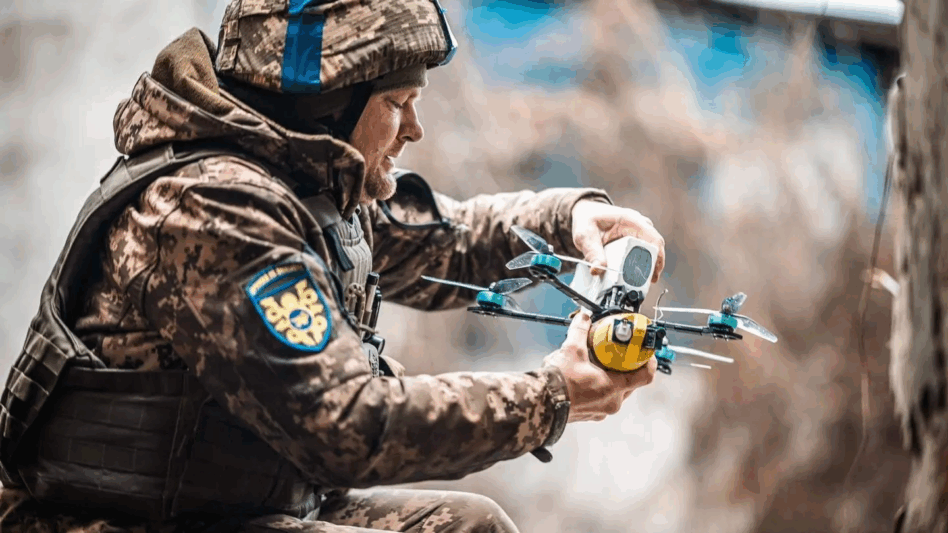As we mentioned yesterday, after Ukrainian President Volodymyr Zelenskyy and Trump met in the Oval Office, Zelenskyy said that Ukraine had offered to buy about $90B worth of US weapons as part of a deal to end the war with Russia. Plus, the US would buy Ukrainian weapons once they’re cleared for export.
The FT also reported that the US and Ukrainian delegations had discussed a $50B deal for US companies to produce drones alongside their Ukrainian counterparts.
So, with all this chatter about the Ukrainian defense industry, we thought we’d take a deeper look: After more than three years of war, what does the industry look like, and what would they be exporting?
Big ups: In 2022, Ukraine’s defense production capacity stood at just $1B—basically nonexistent. This year, that’s expected to reach $35B.
- Government orders for domestically produced weapons remain low, however, at around $11.5B—industry argues that the rest of what they produce could be exported to allies.
- About 40 percent of frontline weaponry is domestically produced, and nearly all drones and EW systems are made in-country.
Look ma, no hands: As we all very well know, a lot of this buildup has been in the drone space. According to Zelenskyy, Ukrainian producers churned out 2.2M drones in 2024.
- The country now has well over 200 drone producers, up from just 7 in 2022.
- Ukraine’s Unmanned Systems Forces now has over 5,000 personnel dedicated to developing and scaling unmanned weapons systems.
- Ukraine spent over $1.5B on domestically produced unmanned systems in the 16 months from January 2024 to April 2025.
- An estimated 96 percent of drones deployed by Ukraine are now domestically produced.
Foreign producers, including Helsing, Shield AI, and Anduril, have all sent drones to Ukraine, but as Carnegie Endowment Ukrainian military expert Mike Kofman told us earlier this year, “a few thousand drones, just in terms of the scale of deployment, isn’t going to make much of a difference.” Plus, the Ukrainians can build their own drones to do exactly what they need them to—for a fraction of the price.
“By and large, Western drone systems tend to be overpriced relative to the qualitative advantage that they bring, and many Ukrainian systems, Ukrainian-produced systems, are just as capable, if not more capable. They’re also easier to manufacture and deploy,” Kofman said in January.
Big dogs: And Ukraine isn’t just producing FPV drones. Since 2022, the country has increased its capacity for building larger weapons systems, too:
- Ukrainian companies produced about 100 Neptune cruise missiles in 2024, and several other cruise-missile-like drones (like the Palianytsia, Trembita, and Peklo).
- The country also brought a prototype 2S22 Bohdana 155 mm howitzer into full production last year. 184 have now been produced, with about 85 percent of parts domestically sourced.
- The Ukrainian intelligence services (SBU) have also developed larger unmanned weapons systems, such as the Magura family of unmanned surface vessels (USVs) that have been pretty damn effective in taking out Russia’s Black Sea Fleet.
What’s mine is not yours: The problem is, exporting all of these weapons is tricky. The country has had a de facto wartime weapons export ban in place since 2022 (export licenses are basically not approved), in an attempt to keep critical weaponry on Ukrainian soil.
But this might be starting to change. Last fall, Zelenskyy asked the Defense Ministry to draft proposals to allow the export of weaponry—but only to allies.
- Exports would be limited to members of the Ramstein group, or NATO allies that support Ukraine.
On Monday, Ukrainian Defense Minister Denys Shmyhal said that there is “no legislative ban [on exports]; exports are possible.” But before weapons leave the country, he said, domestic needs should be met—which he says they’re not (yet).
Danylo Hetmantsev, head of Ukraine’s parliamentary finance committee, has also pushed for the loosening of restrictions on weapons exports. He has called for the creation of a “special legal and tax regime” that would allow companies to sell abroad, and says it could generate tens of billions in domestic revenue.
Financial Times reporting from late last year found that exporting drones alone could generate up to $20B in revenue for Ukraine, which could help keep the drone industry and its talent from bleeding out of the country. Some companies—including Ukrspecsystems and Roboneers— have already relocated parts of their production lines to Poland so they can more easily sell their kit abroad.
Cheap and cheerful: If wartime export limits are lifted, that could create an interesting dynamic in the drone space, particularly with oodles of low-cost drones, developed and tested on the Ukrainian battlefield, flooding the international market. And if they’re teaming up with the Americans, that could spell trouble for US drone producers—especially considering the whole “drone dominance” thing.
Whatever happens, we can’t wait until Ukrainian producers start talking about their drones being battle-tested on the streets of DC.

